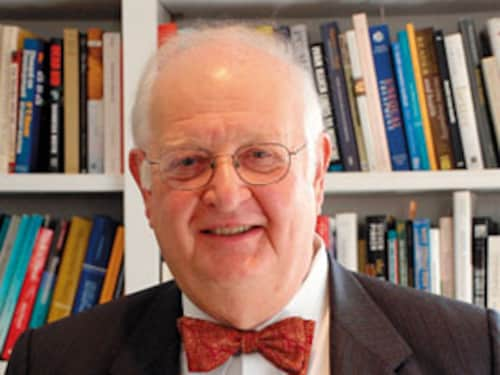How Much Does Your Happiness Cost?
Angus S. Deaton of Princeton University tells Forbes India about his latest study in which he connects happiness to income levels


Angus S. Deaton
Age: 65
Designation: Professor of international affairs and economics, Princeton University
Education: BA, MA, Ph.D, Cambridge University
Career: Professor at Cambridge University and the University of Bristol
Interests: Fly-fishing, travelling
Your study found that it takes an income of $75,000 annually for individuals in the US to be happy. How could this be applied to India?
Well, one thing you could do is to just convert the $75,000 to Indian rupees using a purchasing power parity exchange rate. But the trouble is we have no evidence as to whether this would be true in India or not. We have very limited data for India, so that’s a study we might be able to do someday, but we’re not there yet. My guess is the distinction we draw between life-evaluation on the one hand and hedonic wellbeing on the other hand would apply fairly universally.
What does hedonic wellbeing mean?
Well, if you don’t have enough to eat, if you’re subject to a lot of disease, if your children are under-weight and are not attaining their full height — it’s hard to believe that those physical un-freedoms do not go hand-in-hand with a good deal of mental distress.
How accurate is the GDP as a measure of economic and hedonic wellbeing?
GDP is very strongly correlated with life-evaluation on the ladder number [the Cantril ladder scale measures the best- and worst-possible life on a scale of 0 to 10] in our study. There’s a very, very high correlation between people’s average ladder scores and the GDP of the country in which they live. But there’s a much weaker correlation between hedonic wellbeing like happiness or sadness with income. So people seem to be able to achieve more of their day-to-day happiness, which is emotional wellbeing, in spite of having relatively lower incomes.
Your study mentions that human connections facilitate happiness. In Indian villages, for instance, economic necessity forces people to connect with each other. How would this contribute to their wellbeing?
This is pure conjecture, but what you say seems to be entirely possible. But I don’t think all of these social relationships in India are ones that you would necessarily choose. For instance, some of them are exploitative. But it’s true that people are getting connected up in poorer countries and it’s possible this raises the level of their day-to-day hedonic wellbeing relative to what it would otherwise be.
Do better human connections alleviate the brunt of poverty?
I think it might do that. But I doubt very much that it would fully offset the disadvantages of being extremely poor.
How does globalisation affect the wellbeing of people at the lower income level?
Globalisation may be causing countries — considered one at a time — to be growing further apart. I don’t think globalisation by itself has any direct impact on measure of wellbeing it works through the things that globalisation brings — higher incomes or in some cases lower incomes, or better health care or better medical technologies that move around the world much faster than they used to do.
What can policymakers learn from your study?
That’s one of the big open questions — we have two different measures, hedonic and life-evaluation. And it’s not clear which of these two policymakers should focus on, if indeed they want to focus on either of them.
First Published: Apr 25, 2011, 06:51
Subscribe Now